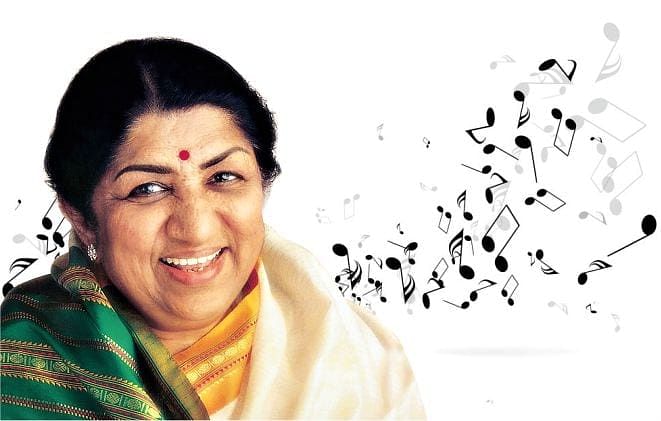‘Swara Kokila’ Lata Mangeshkar passed away on February 6, at the age of 92, following a prolonged illness where she suffered pneumonia along with COVID. Mangeshkar was admitted to the Breach Candy Hospital in Mumbai on January 8. She breathed her last at 8 AM on Sunday.
Mangeshkar was noted for her distinctive voice and vocal range that extended over three octaves.
Born on September 28, 1929 in Indore to Pandit Deenanath Mangeshkar and Shevanti Devi, Lata was the eldest of five siblings. Her father, a noted Marathi stage personality, was popularly as Master Deenanath. Her birth name was ‘Hema’, which was later changed to ‘Lata’, after a female character, Latika, in one of her father’s plays, BhaawBandha.
Lata received her first music lesson from her father and started working as an actress at just five years old, in one of her father’s musicals. At 13, she recorded her first song for Vasant Joglekar’s Marathi film Kiti Hasaal.
Following her father’s sudden demise, Lata, then a teenager, struggled and supported her family and established herself as a playback singer in the Hindi film industry of the 1940s. She moved to Mumbai in 1945 and started taking lessons from Ustad Aman Ali Khan, of the Bhindibazaar Gharana.
For the movie Aap Ki Seva Mein (1946), she sang the song ‘Paa Lagoon Kar Jori’, composed by Datta Davjekar. In Badi Maa (1945), Lata and her sister Asha played minor roles, while she sang the bhajan, ‘Mata Tere Charnon Mein’.
One of Lata’s early mentors was music director Ghulam Haider. He introduced her to producer Sashadhar Mukherjee. She recorded the hit ‘Uthaye ja unke sitam’ for Andaz (1949) and exploded on the scene. From this point on her rise was meteoric: she sang for almost every major leading lady in Hindi cinema, representing every generation of Bollywood, from Nargis and Waheeda Rehman to Madhuri Dixit and Preity Zinta.
Lataji sang RD Burman’s first and last songs – in Chote Nawaab (1961) and ‘Kuch Na Kaho’ in 1942: A Love Story in 1994. Her collaborations with AR Rahman resulted in popular songs like ‘Luka Chupi’ in Rang de Basanti (2006) and ‘O Paalanhaare’ in Lagaan (2001). From ‘Pyar Kiya To Darna Kya’ in Mughal-e-Azam (1960) to ‘Ajeeb Dastaan Hai Yeh’, from Dil Apna Aur Preet Parai (1960) to ‘Rangeela Re’ from Prem Pujari (1970) or even ‘Jiya Jale’ in Dil Se, she had lent her voice to a number of timeless classics over decades. In 2012, Lata Mangeshkar launched her own music label, called LM Music.
In a career spanning nearly eight decades, Lata Mangeshkar lent her voice to over 5,000 songs in over a thousand Hindi and 36 regional films. She had an unprecedented impact on Indian film music. Since 1942, Lata had pushed the boundaries of music with her mind-boggling skills. She had also produced four films: ‘Vadai’ (Marathi, 1953), Jhaanjhar (Hindi, 1953), Kanchan (Hindi, 1955), and Lekin (1990).
Some of the awards Mangeshkar had won include the Padma Bhushan (1969), the Dadasaheb Phalke Award (1989), the Padma Vibhushan (1999), the Maharashtra Bhushan award (1997), the NTR National Award (1999), and ANR National Award (2009). She was awarded the Bharat Ratna, India’s highest civilian award, in 2001. She won three National Film Awards (1972, 1974, 1990), and 12 Bengal Film Journalists’ Association Awards; Filmfare Awards for Best Female Playback Singer four times and the Filmfare Lifetime Achievement Award in 1993.
Lata Mangeshkar also held the distinction of being the most recorded artist in the history of Indian music in The Guinness Book of World Records in 1974. The Indian government honoured her with the Daughter of the Nation award on her 90th birthday in September 2019.
Mangeshkar recorded her last song in 2019, for a song based on PM Narendra Modi’s slogan ‘Saugandh Mujhe is Mitti Ki.’


















